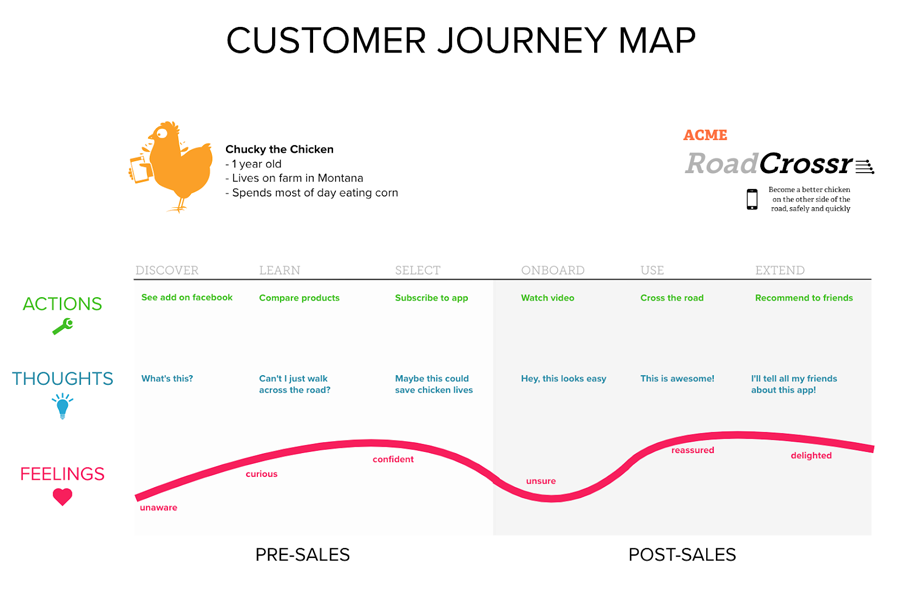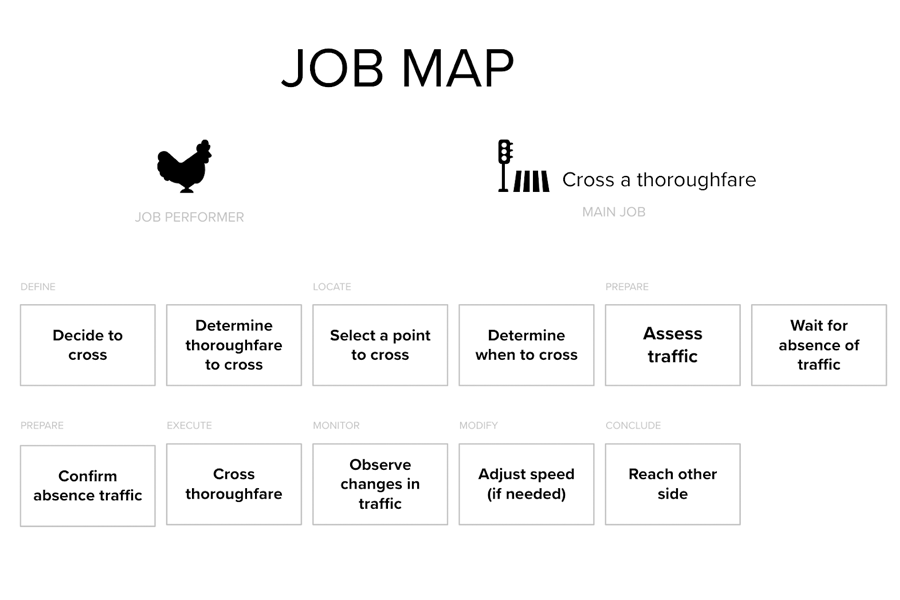Professionals don’t want training; they want the result

As a training provider, you tend to think in terms of ‘training’. The range of courses fulfils certain needs of professionals. The training solves a problem for your customers. To oversimplify it; professionals who need new skills or knowledge.
Then the order of business is often: choose a topic, create a storyboard, translate this into a blended or online training, create content, create content, create content, test and then go live. But then it turns out that it is difficult to find customers for your training.
Does your training offer the right solution for your customer?
Before you start designing, it is essential to understand that professionals are not looking for training. They are looking for the result of the training.
Through this training, they want to accomplish something that they couldn’t do before. How do you find out what they want to accomplish? There are different ways to do this, but the essence is always: go and talk to your customer.
The customer is looking for progress
The professional (your customer) wants to accomplish something. If you know how to find out what that something is, you can align your entire company to it. This allows you to make and market products – including training – that people are actually waiting for.
Of course, you can also use that customer insight to convince people that they should purchase your current training. Although that may sound too good to be true, I’m still going to try to convince you of this.
Free toilet paper
Before I dive into the theory, I first want to share a story with just a whiff of humour (and perhaps a whiff of something else). In it, Russel Brunson, co-founder of software company ClickFunnels, shows how valuable understanding your customer can be.
To help Camping World (an American camping equipment provider) with its online sales, he came up with an online sales funnel that starts with… free toilet paper. Biodegradable toilet paper turns out to be the most sold product in the store.
Russel Brunson
Watch the video to see how Russel comes up with his funnel quite spontaneously while he is in the store. It boils down to this:
Give away biodegradable toilet paper online for free
Extra A: Give a discount on tablets that go into the chemical toilet
Extra B: Give a discount on a hose with which you can empty a chemical toilet
Extra C: Give a discount on the “roadside assistance” service for campers
As soon as people need biodegradable toilet paper, you know they have a motorhome or caravan with a toilet in it. Then there is also a good chance that they need products that fit that “theme”. Perhaps, as a trainer, you can have a look at your market in this way too.
Which training fits into the theme, and can you make a product that helps with what the customer wants to accomplish?
Recently, a friend of mine got his sailing license (coincidentally through a customer of aNewSpring) because he bought a speed boat. The reason he took the training is clear: to get his license to sail his boat. During the training, however, he also learned that he needs life jackets, letters to stick on the boat, lights for in the dark and so on.
Selling these types of products at a training may be going a bit too far, but you could offer a follow-up training for customers to get a towing license, so they can hitch the boat and trailer behind their vehicle. Or perhaps there is a demand for boat maintenance training.
Thus, challenge yourself as a trainer and look for the question behind the question, so that you can help your customers even more. What is the background of someone who comes to a management training? Why does someone want to follow a language course? What does someone who seeks safety training want to accomplish?
A faster horse
You probably know the example of Henry Ford in which he says: “If you ask customers what they want, they will tell you they want a faster horse.”
You could interpret this as you shouldn’t listen to the customer, but I don’t think that’s the point. The point is that you have to look very carefully at what the customer wants to accomplish.
The customer is asking for a faster horse to get from A to B faster. If you have a solution for that, then you make something that people want to buy. And clearly that doesn’t have to be a horse, as Mr. Ford has shown.
There is room for improvement at many companies when it comes to putting customer demand first. I use “customer” here, but in the case of you as a trainer this is the trainee or the person to whom you sell the training.
It is often talked about a lot, but a framework is missing to do this in a structured way, so that all customer knowledge is made transparent in one place. A framework is needed to put all insights together so that everyone benefits from it: product development, marketing, sales, customer service and so on.
Who within your organisation has information about your customer?
What often happens is that customer information is fragmented. Each team has a different puzzle piece and if you put them together, the puzzle is still not complete. As far as I am concerned, there are two scenarios that often recur:
Customers are not listened to.
There are fewer and fewer of these companies, but it still happens, for example, when the USPs of a company are determined completely independently without asking the customers directly about their needs.
The customers are listened to, but the companies fail to zoom out to understand why the customers want that.
The development roadmap is then quickly filled with customer wishes. In the short term this works and the customers are happy, but there will come a time when a competitor understands what the customer really wants to accomplish, so that “suddenly” a better product is on the market and you are side-lined. Thus, the faster horse that customers asked for and that you are working so hard to breed is no longer necessary when the car is there, and the faster pneumatic tube that you are working on is replaced by the radio, and so on.
Put customer needs first with Jobs-to-be-Done
There are many different ways of looking at customer needs. Many “creatives” are familiar with Alexander Osterwalders’ Value Proposition Canvas. Each marketing team has personas drawn up and often there is also a customer journey. But what is usually not included is a Job-map.
Jim Kalbach explains what a Job-map is in his handy book The Jobs to be Done Playbook. It contains a lot of tips to start with JTBD. It starts with creating a Job-map, an overview of what the customer wants to accomplish.
Because he works at Mural (software to facilitate workshops), in his book he uses the example of a Job-map for a workshop facilitator who will therefore give a workshop. That is very similar to giving a training, so I will use this example for a moment. A Job-map is always chronological. Thus, there is a beginning, a middle and an endpoint.
You can do two things to create a job map:
Create a Job map through a brainstorming session with colleagues
You hold a brainstorming session with colleagues in which, for example, you put sticky notes on the different stages that you go through for your ‘job performer’, the person who purchases your product or training.
Create a Job map by interviewing customers
If you do option 2 after option 1, you can improve the Job map by conducting interviews with customers or prospects, but you can also do the interviews first. Most satisfied customers will be happy to help you. Call them or email them to ask if you can give them a call to go into depth.

What questions do you ask to create a Job map?
The customer is sitting there ready to answer your questions. The interview is mainly about finding out what the customer wants to accomplish and which process he/she goes through. I will use the workshop example here:
Can you tell me why you are going to facilitate a workshop?
How do you determine what the end result of the workshop should be?
Can you tell me if something went wrong during a workshop?
How do you determine which activities you will do during the workshop?
What do you do when the workshop is over?
When is a workshop a success?
It is important that you also go into depth, listen carefully and ask questions such as:
Can you tell me more about that?
How did you do that?
Why is that important (to you)?
What was difficult about it?
This way you find out what they want to accomplish, what the steps are that your customer goes through and what the challenges are.
Conducting the customer interview
Having a conversation is often not that difficult. Conducting a good interview is a bit more difficult; it needs to be structured, yet leave room for interaction. Wendy Woelen has written a useful article that has been posted on Frankwatching. That is definitely worth a read. In the blog, she provides numerous guidelines and tips to determine the customer’s needs and concrete examples of questions that you can ask. Translated loosely for the role of the trainer, examples of these include:
How did you decide to book this training?
Why are you following this training?
What have you already done/tried before you booked this training?
When is the training successful?
Can you tell me about a training that did not meet your expectations at all?
What do you do when the training is over?
Then you have some homework to do. You now have to listen to or transcribe the recorded interviews. That way you can then go through them again at your leisure to find out what the specific need really is and create or supplement the job map. Yes, this is a lot of work, but if you do this with 6-10 customers you will already gain a lot of insight.
Why did the chicken cross the road?
Imagine for a moment that your company has created an app that helps chickens cross the road. You will start working on creating a persona that you call “Chucky the Chicken”. Then you create a customer journey map and describe the different funnel phases.
Marketers (myself included) love this and there are several forms of it but it says very little about what Chucky the Chicken actually wants to accomplish.

However, if you use a Job map in addition to a customer journey map, your marketing is much more likely to be successful, because you have a much better understanding of what the customer wants to accomplish. It will also be much easier to innovate.
Based on the job map below, you can probably quickly estimate where your product scores well and where it does not. You can also plot competitors on the job map.
Moreover, it provides very good insight into the process that your customer goes through, and all departments benefit greatly from this: marketing, sales, development, and so on.

And now talk to your customers!
I especially hope that the simplicity of the toilet paper funnel and the Chuck the Chicken Job map makes it clear how valuable it is to really search for and map out what the customer wants to accomplish now. And, as a final tip, just start talking to customers.
In a podcast by Ben Tiggelaar about innovation, Kim Spinder explains how people start with innovation: “People open their laptops, then they open Word, and then they start typing, but that is not innovation!” She explains that most importantly, you must actually do things and take action.
So, schedule those customer interviews right away!
